(below) One of the larger meteorites collected during the season.
(right) The rolling hills of blue ice. The rocks in the foreground unfortunately were not meteorites, and are simply part of the local geology.
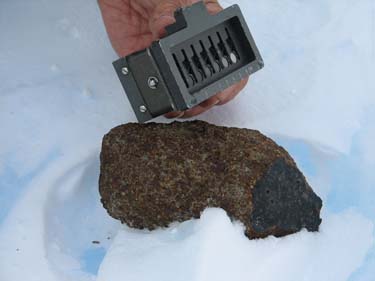
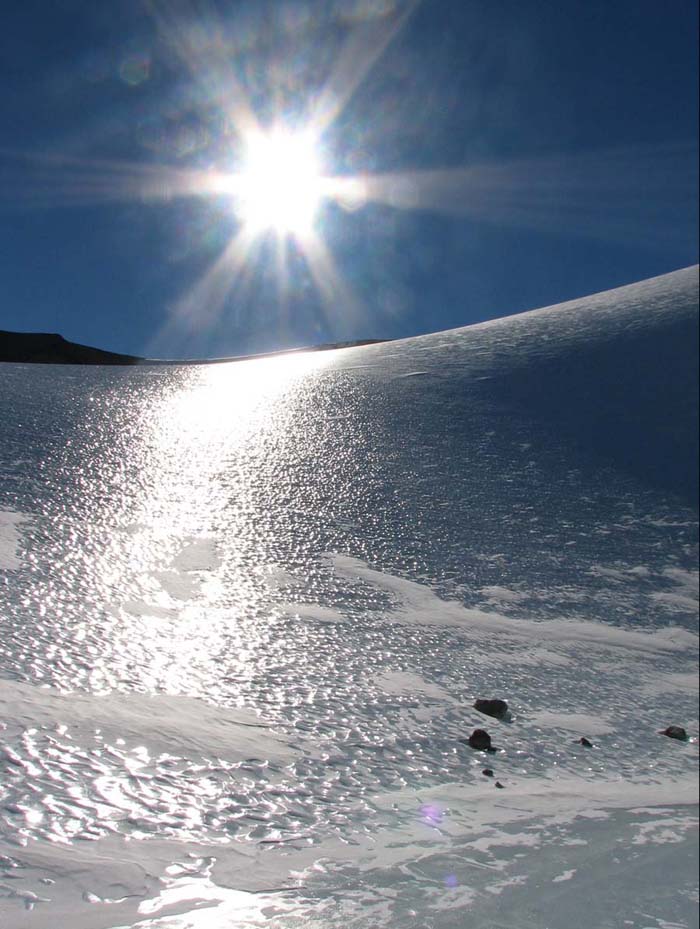
|
From late November 2005 to mid-January 2006, Boesenberg joined ANSMET (The Search for Antarctic Meteorites), a jointly funded NASA/National Science Foundation annual expedition, to help collect meteorites on the blue ice fields. He went to Miller Range in the Transantarctic Mountains, which is about 400 miles from the South Pole. The meteorites collected are processed and curated at Johnson Space Center
in Houston and the National Musuem of Natural History (the Smithsonian)
in Washington D.C. Institutions and individuals from around the world
can borrow or obtain samples of the meteorites for research or educational/display
purposes. |
(below) One of the larger meteorites collected during the season.(right) The rolling hills of blue ice. The rocks in the foreground unfortunately were not meteorites, and are simply part of the local geology. |
 |

Some of the spectacular scenery in an area called Hockey Cirque. Note the snowmobile at the far left for scale. |
(below) Looking across the valley at Milan Ridge.(right) A massive ice windscoop adjacent to a nunatak. The cliff was made as ice was ablated away near the mountain by the wind.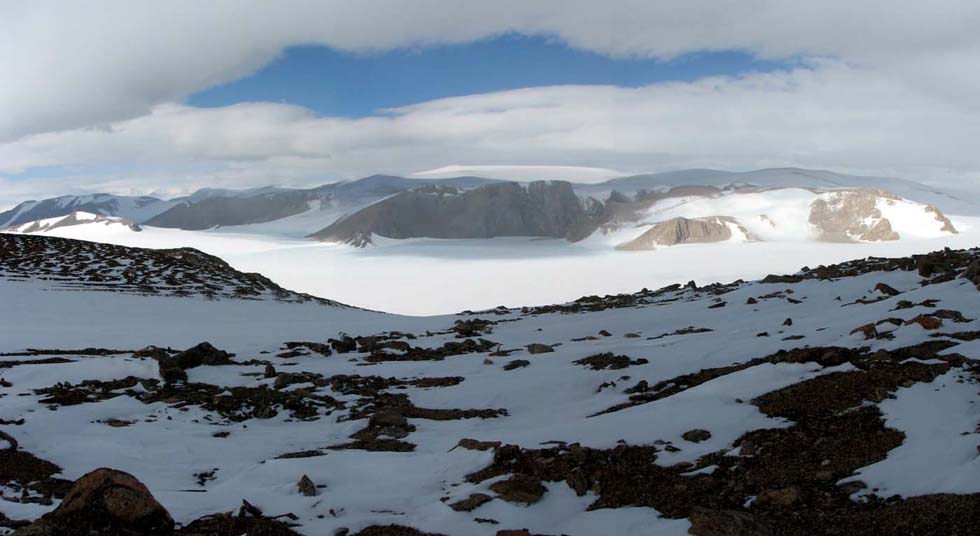 |
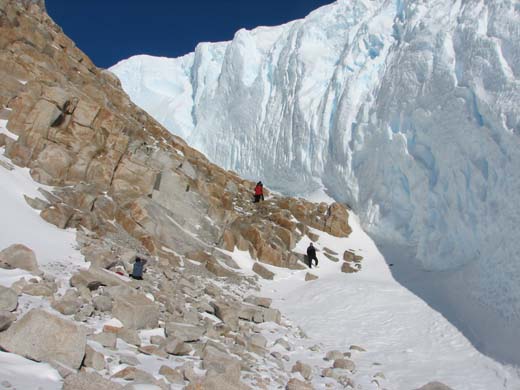 |

During eight weeks in Antarctica only one penguin was seen, and it was along the shoreline near McMurdo Station (above). |
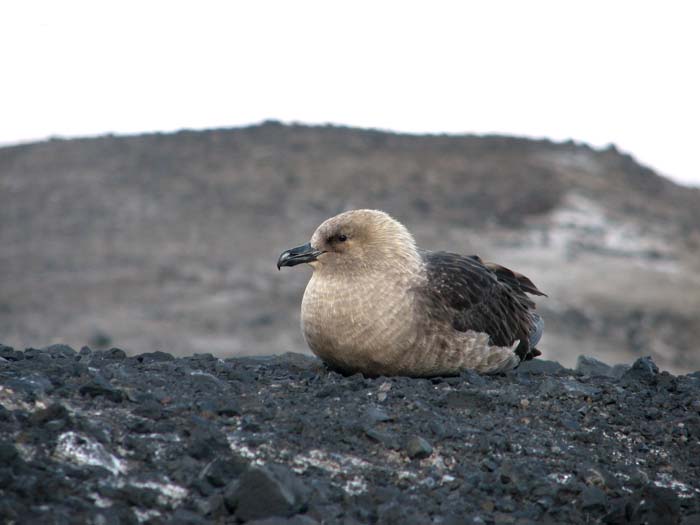
One of the most successuful animals in Antarctica is the skua (above). These aggressive birds are both scavengers and predators. They are also the only animal you will see (besides humans) on the interior of the continent, often seen following aircraft to the South Pole. |
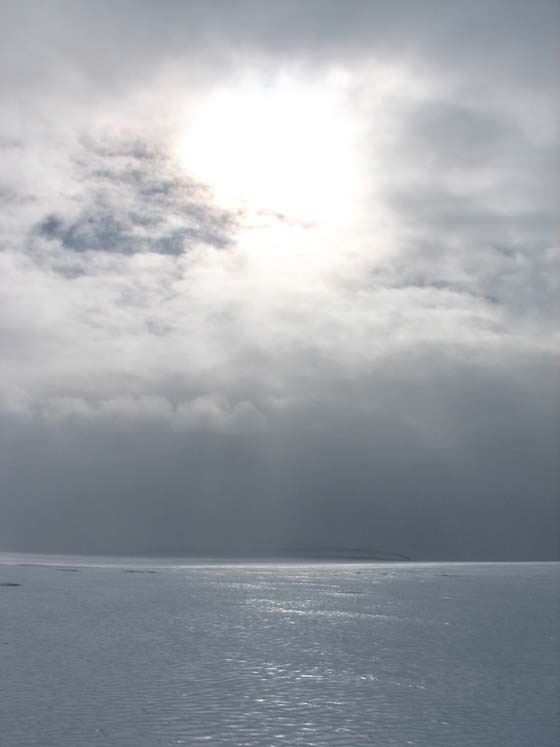
(above) The first of three snow storms approaches. This severly hampered the metoerite collecting objective.(right) A photo of the first sunset Joe saw in 56 days, taken from inside a C-17 on the trip back to New Zealand . |
 |